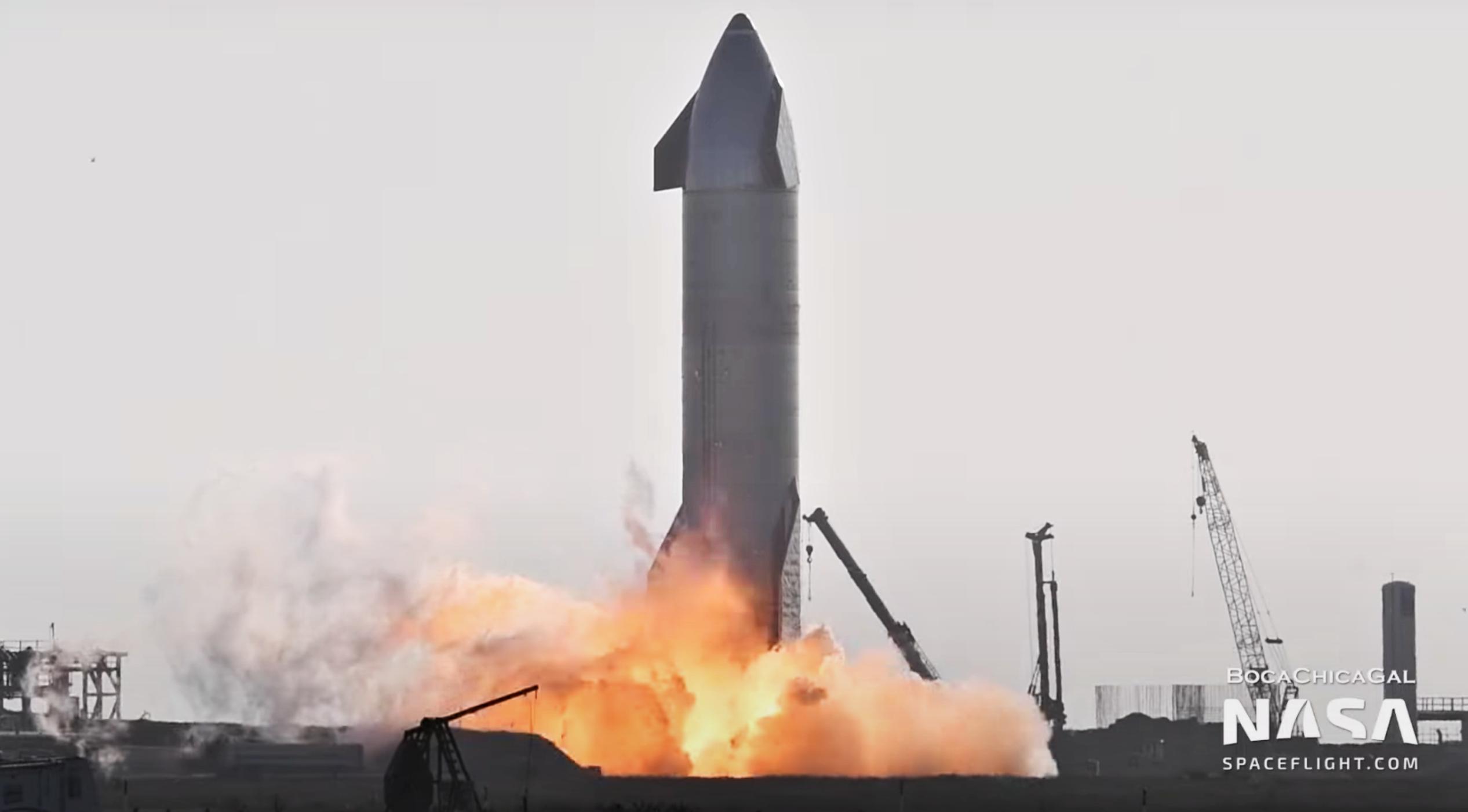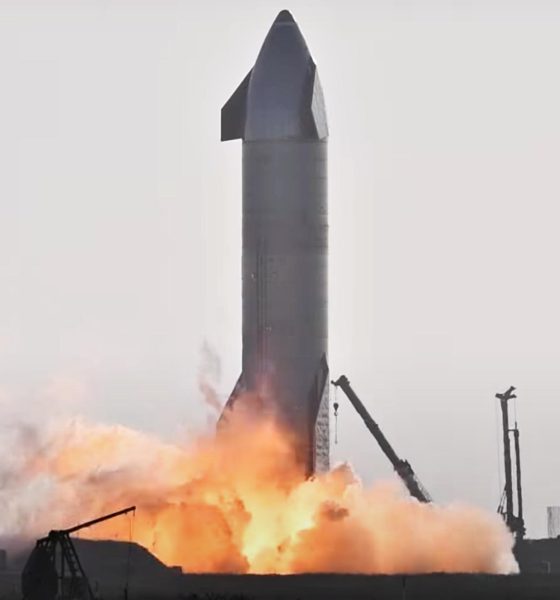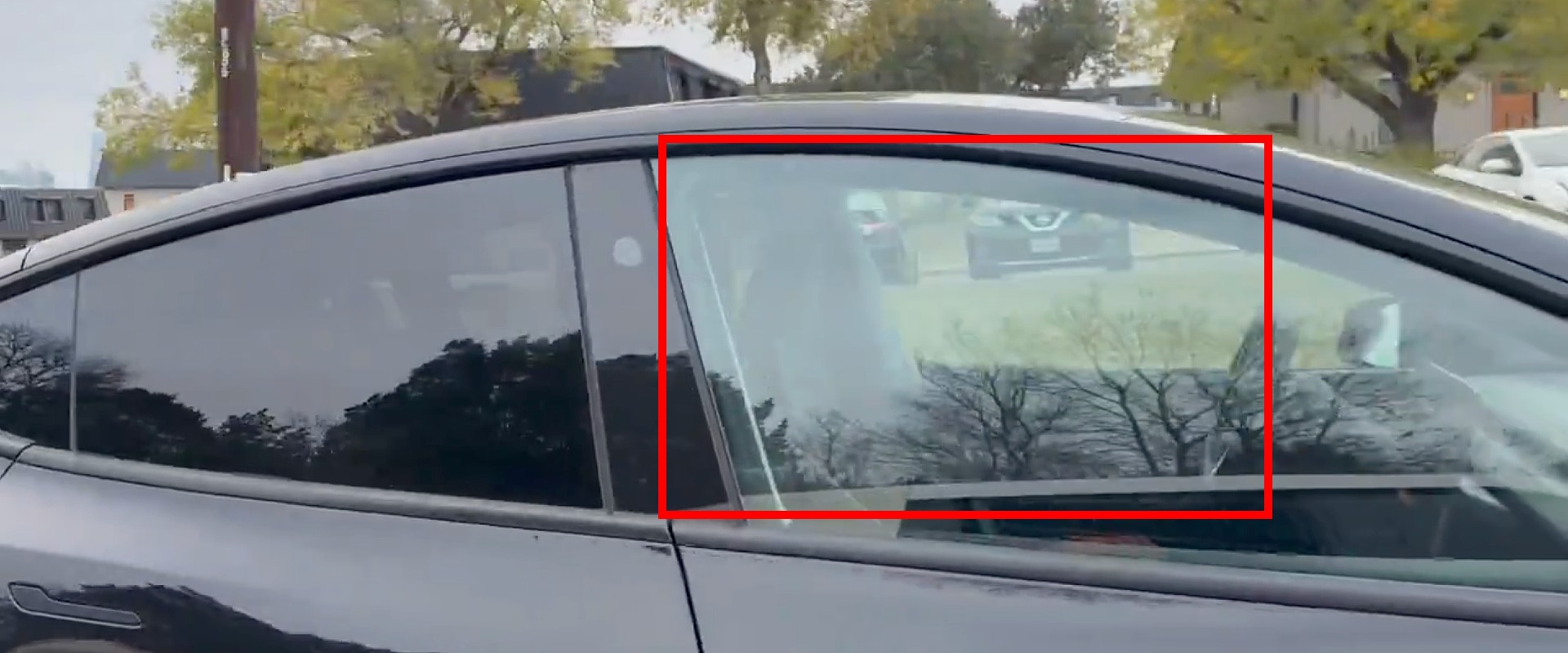

News
SpaceX Starship eyes Tuesday launch after FAA communication breakdown causes delays
Two new sourced reports suggest that SpaceX’s fast-moving approach to Starship development and a shocking level of naivety and ineptitude on behalf of the FAA’s regulatory responsibilities combined to delay the latest Starship test flight.
As previously discussed on Teslarati, SpaceX was clearly and publicly targeting a Starship launch as early as 12pm to 5pm on Monday, March 29th after unknown issues delayed a Friday attempt. Those plans were writ large on SpaceX’s own website and via CEO Elon Musk’s tweets a full three days before launch and confirmed by road closures, notices to mariners, and the FAA’s own flight restrictions and advisories 24-48 hours prior. Around 11am CDT Monday, Musk revealed that SpaceX had been forced to call off the day’s launch attempt because an FAA-required inspector was “unable to reach” Boca Chica in time.
Now, per reports separately corroborated by The Verge reporter Joey Roulette and Washington Post reporter Christian Davenport, a clearer picture of what exactly transpired is available.
Roulette first broke the news, offering a better look at a portion of the debacle. Per “a source,” SpaceX had apparently told the FAA inspector – who had been waiting all week for Starship SN11’s launch debut – that plans for a Monday recycle had been canceled. The inspector then flew home to Florida. However, as things often do and have, the situation rapidly changed and SpaceX suddenly found itself in a position to launch on Monday.
According to the apparent FAA-side source, SpaceX dropped that change of plans on the agency’s lap late on Sunday, leading the inspector to “[scramble]” onto a Monday flight that was somehow too late to arrive before the 5pm CDT end of Starship’s test window. In a statement, the FAA chided SpaceX, stating that the company “must provide adequate notice of its launch schedule to allow for a safety inspector to travel to Boca Chica.”
Under that description of events, it would be hard not to find SpaceX clearly in the wrong. Mere hours of notice – and only offered late on Sunday evening – would make it difficult for anyone to abruptly arrange a 1300-mile, multi-stop flight. At the same time, though, someone capable of singlehandedly scrubbing an entire rocket launch attempt on a whim (or an accident) is obviously not just “anyone” and a functional regulatory apparatus probably wouldn’t leave the entirety of that substantial responsibility up to a single employee.
As it so happened, Roulette’s source only offer part of the picture. According to Christian Davenport and his sources, SpaceX (or someone) did tell the FAA inspector that it was safe to head home on Friday because the company was struggling to secure road closures from Cameron County for a Monday launch attempt. Apparently, the issue was so extreme that SpaceX wasn’t sure if a launch on any day of the next week would be possible.
However, sometime early on Sunday morning, SpaceX secured a road closure for a Monday Starship launch attempt. According to Davenport, SpaceX emailed the FAA inspector but he “didn’t see the email,” which presumably served as a notice of plans for a Starship launch attempt. Logically, SpaceX then began attempting to call the FAA (inspector?) but didn’t get an answer or call back until “late Sunday night.”
Via Cameron County’s explicitly public road closure announcement website, Monday’s road closure was granted no later than 11am CDT. Assuming SpaceX emailed the FAA inspector around then, that email effectively served as a notice of launch plans more than 24 hours before the window was scheduled to open. If SpaceX didn’t somehow forget to email until hours later, Davenport’s description implies that it took SpaceX hours of constant phone calls before the FAA finally responded.
If that series of events is accurate, as it seems to be, it’s a searing indictment of systematic ineptitude and laziness on behalf of the FAA. Having changed SpaceX’s Starship launch license to necessitate the presence of an FAA inspector mere weeks ago, thus giving a single person the power to scrub an entire launch attempt, the regulatory agency appears to have entrusted the entirety of that responsibility to a single “inspector.” Knowing full well that SpaceX works continuously with multiple shifts after almost two years of managing Starhopper and Starship tests, hops, and launches, the FAA then failed to ensure that some kind of communications infrastructure was in place to keep SpaceX appraised about the availability of a single inspector it now fully hinged on for all future Starship launches.
If, as the phrasing in both reports suggests, the FAA allotted a single government inspector to preside over all future Starship launches, that alone would bely a ridiculous level of ineptitude and naivete (or ignorance). To then trust that single person with nearly all of the responsibility of maintaining contact with SpaceX, day and night, would be akin to the FAA consciously guaranteeing that a disruptive breakdown in communications like this one would happen.
All told, SpaceX likely also needs to do some recalibration to better mesh and coexist with the FAA’s glacial reaction time and pace of work. However, the FAA is not going to be winning any favors if it continues to manage SpaceX’s Starship licensing in a manner as inept and cavalier as it has been. Far more importantly, if the FAA – one of the largest, best-funded regulatory bodies responsible for ensuring the safety of some of the most complex systems and vehicles on Earth – is unable to perform tasks as rudimentary as scheduling and contingency planning, it’s difficult to imagine how that same office could be trusted to regulate – and make safer – systems as extraordinarily complex as launch vehicles.
With any luck, the FAA will prove that the last four months have been minor bumps in the road to reliably and professionally licensing and regulating SpaceX’s Starship launch vehicle. However, after two separate demonstrations of systematic mismanagement over a mere four Starship launch attempts, it’s becoming harder and harder to soundly argue that the FAA still deserves the benefit of the doubt.
Assuming the FAA inspector is on schedule, Starship SN11’s next launch attempt is now scheduled between 7am and 3pm CDT (UTC-5) on Tuesday, March 30th.

News
Tesla removes Safety Monitors, begins fully autonomous Robotaxi testing
This development, in terms of the Robotaxi program, is massive. Tesla has been working incredibly hard to expand its fleet of Robotaxi vehicles to accommodate the considerable demand it has experienced for the platform.

Tesla has started Robotaxi testing in Austin, Texas, without any vehicle occupants, the company’s CEO Elon Musk confirmed on Sunday. Two Tesla Model Y Robotaxi units were spotted in Austin traveling on public roads with nobody in the car.
The testing phase begins just a week after Musk confirmed that Tesla would be removing Safety Monitors from its vehicles “within the next three weeks.” Tesla has been working to initiate driverless rides by the end of the year since the Robotaxi fleet was launched back in June.
Two units were spotted, with the first being seen from the side and clearly showing no human beings inside the cabin of the Model Y Robotaxi:
A Tesla without a driver was spotted traveling on public roads! pic.twitter.com/ZLbduf4cKa
— TESLARATI (@Teslarati) December 14, 2025
Another unit, which is the same color but was confirmed as a different vehicle, was spotted just a few moments later:
NEWS: A second Tesla Model Y Robotaxi running FSD Unsupervised has just been spotted driving itself on public roads in Austin, Texas, with no one in the front seats.
This is a different car from the one spotted earlier. They have different license plates.
h/t @Mandablorian https://t.co/5URYsUGyD0 pic.twitter.com/CIUi4mXi33
— Sawyer Merritt (@SawyerMerritt) December 14, 2025
The two units are traveling in the general vicinity of the South Congress and Dawson neighborhoods of downtown Austin. These are located on the southside of the city.
This development, in terms of the Robotaxi program, is massive. Tesla has been working incredibly hard to expand its fleet of Robotaxi vehicles to accommodate the considerable demand it has experienced for the platform.
However, the main focus of the Robotaxi program since its launch in the Summer was to remove Safety Monitors and initiate completely driverless rides. This effort is close to becoming a reality, and the efforts of the company are coming to fruition.
Testing is underway with no occupants in the car
— Elon Musk (@elonmusk) December 14, 2025
It is a drastic step in the company’s trek for self-driving technology, as it plans to expand it to passenger vehicles in the coming years. Tesla owners have plenty of experience with the Full Self-Driving suite, which is not fully autonomous, but is consistently ranked among the best-performing platforms in the world.
News
Tesla refines Full Self-Driving, latest update impresses where it last came up short
We were able to go out and test it pretty extensively on Saturday, and the changes Tesla made from the previous version were incredibly impressive, especially considering it seemed to excel where it last came up short.

Tesla released Full Self-Driving v14.2.1.25 on Friday night to Early Access Program (EAP) members. It came as a surprise, as it was paired with the release of the Holiday Update.
We were able to go out and test it pretty extensively on Saturday, and the changes Tesla made from the previous version were incredibly impressive, especially considering it seemed to excel where it last came up short.
Tesla supplements Holiday Update by sneaking in new Full Self-Driving version
With Tesla Full Self-Driving v14.2.1, there were some serious regressions. Speed Profiles were overtinkered with, causing some modes to behave in a strange manner. Hurry Mode was the most evident, as it refused to go more than 10 MPH over the speed limit on freeways.
It would routinely hold up traffic at this speed, and flipping it into Mad Max mode was sort of over the top. Hurry is what I use most frequently, and it had become somewhat unusable with v14.2.1.
It seemed as if Speed Profiles should be more associated with both passing and lane-changing frequency. Capping speeds does not help as it can impede the flow of traffic. When FSD travels at the speed of other traffic, it is much more effective and less disruptive.
With v14.2.1.25, there were three noticeable changes that improved its performance significantly: Speed Profile refinements, lane change confidence, and Speed Limit recognition.
🚨 Many of you asked us to test highway driving with Tesla Full Self-Driving v14.2.1.25. Here’s what we noticed:
✅ Speed Profiles are significantly improved. Hurry Mode is no longer capped at 10 MPH over the speed limit, and now travels with the flow of traffic. This is much… pic.twitter.com/48ZCGbW0JO
— TESLARATI (@Teslarati) December 13, 2025
Speed Profile Refinement
Speed Profiles have been significantly improved. Hurry Mode is no longer capped at 10 MPH over the speed limit and now travels with the flow of traffic. This is much more comfortable during highway operation, and I was not required to intervene at any point.
With v14.2.1, I was sometimes assisting it with lane changes, and felt it was in the wrong place at the wrong time more frequently than ever before.
However, this was one of the best-performing FSD versions in recent memory, and I really did not have any complaints on the highway. Speed, maneuvering, lane switching, routing, and aggressiveness were all perfect.
Lane Changes
v14.2.1 had a tendency to be a little more timid when changing lanes, which was sort of frustrating at times. When the car decides to change lanes and turn on its signal, it needs to pull the trigger and change lanes.
It also changed lanes at extremely unnecessary times, which was a real frustration.
There were no issues today on v14.2.1.25; lane changes were super confident, executed at the correct time, and in the correct fashion. It made good decisions on when to get into the right lane when proceeding toward its exit.
It was one of the first times in a while that I did not feel as if I needed to nudge it to change lanes. I was very impressed.
Speed Limit Recognition
So, this is a complex issue. With v14.2.1, there were many times when it would see a Speed Limit sign that was not meant for the car (one catered for tractor trailers, for example) or even a route sign, and it would incorrectly adjust the speed. It did this on the highway several times, mistaking a Route 30 sign for a 30 MPH sign, then beginning to decelerate from 55 MPH to 30 MPH on the highway.
This required an intervention. I also had an issue leaving a drive-thru Christmas lights display, where the owners of the private property had a 15 MPH sign posted nearly every 200 yards for about a mile and a half.
The car identified it as a 55 MPH sign and sped up significantly. This caused an intervention, and I had to drive manually.
It seems like FSD v14.2.1.25 is now less reliant on the signage (maybe because it was incorrectly labeling it) and more reliant on map data or the behavior of nearby traffic.
A good example was on the highway today: despite the car reading that Route 30 sign and the Speed Limit sign on the center screen reading 30 MPH, the car did not decelerate. It continued at the same speed, but I’m not sure if that’s because of traffic or map data:
🚨 We listened to and read a lot of you who had a complaint of Tesla Full Self-Driving v14.2.1 incorrectly reading Speed Limit signs
This appears to be resolved in v14.2.1.25.
Here’s a breakdown: pic.twitter.com/TEP03xrMbt
— TESLARATI (@Teslarati) December 13, 2025
A Lone Complaint
Tesla has said future updates will include parking improvements, and I’m really anxious for them, because parking is not great. I’ve had some real issues with it over the past couple of months.
Today was no different:
🚨 My lone complaint with my drive on Tesla FSD v14.2.1.25 was this strange parking instance.
FSD swung out wide to the left to pull into this spot and this is where it seemed to be stumped. I gave it about 10 seconds after the car just stopped moving for it to make some… https://t.co/ZEkhTHOihG pic.twitter.com/TRemXu5DLf
— TESLARATI (@Teslarati) December 13, 2025
Full Self-Driving v14.2.1.25 is really a massive improvement over past versions, and it seems apparent that Tesla took its time with fixing the bugs, especially with highway operation on v14.2.1.
News
Tesla hints at Starlink integration with recent patent
“By employing polymer blends, some examples enable RF transmission from all the modules to satellites and other communication devices both inside and outside the vehicle.”

Tesla hinted at a potential Starlink internet terminal integration within its vehicles in a recent patent, which describes a vehicle roof assembly with integrated radio frequency (RF) transparency.
The patent, which is Pub. No U.S. 2025/0368267 describes a new vehicle roof that is made of RF-transparent polymer materials, allowing and “facilitating clear communication with external devices and satellites.”
Tesla believes that a new vehicle roof design, comprised of different materials than the standard metallic or glass elements used in cars today, would allow the company to integrate modern vehicular technologies, “particularly those requiring radio frequency transmission and reception.
Tesla has recently filed a US patent application on integrating RF transparent materials into the roof structure.
“facilitating clear communication with external devices and satellites”
Tesla fleet is getting @Starlink connectivity integration soon. LFG @Tesla @elonmusk… pic.twitter.com/bLa8YtPLd1
— Chansoo Byeon (@Chansoo) December 9, 2025
Instead of glass or metallic materials, Tesla says vehicles may benefit from high-strength polymer blends, such as Polycarbonate, Acrylonitrile Butadiene Styrene, or Acrylonitrile Styrene Acrylate.
These materials still provide ideal strength metrics for crashworthiness, stiffness for noise, vibration, and harshness control, and are compliant with head impact regulations.
They would also enable better performance with modern technologies, like internet terminals, which need an uninterrupted signal to satellites for maximum reception. Tesla writes in the patent:
“By employing polymer blends, some examples enable RF transmission from all the modules to satellites and other communication devices both inside and outside the vehicle.”

One of the challenges Tesla seems to be aware of with this type of roof design is the fact that it will still have to enable safety and keep that at the forefront of the design. As you can see in the illustration above, Tesla plans to use four layers to increase safety and rigidity, while also combating noise and vibration.
It notes in the patent that disclosed examples still meet the safety requirements outlined in the Federal Motor Vehicle Safety Standards (FMVSS).
Starlink integrated directly into Tesla vehicles would be a considerable advantage for owners. It would come with a handful of distinct advantages.
Initially, the inclusion of Starlink would completely eliminate cellular dead zones, something that is an issue, especially in rural areas. Starlink would provide connectivity in these remote regions and would ensure uninterrupted service during road trips and off-grid adventures.
It could also be a critical addition for Robotaxi, as it is crucial to have solid and reliable connectivity for remote monitoring and fleet management.
Starlink’s growing constellation, thanks to SpaceX’s routine and frequent launch schedule, will provide secure, stable, and reliable internet connectivity for Tesla vehicles.
Although many owners have already mounted Starlink Mini dishes under their glass roofs for a similar experience, it may be integrated directly into Teslas in the coming years, either as an upgrade or a standard feature.








